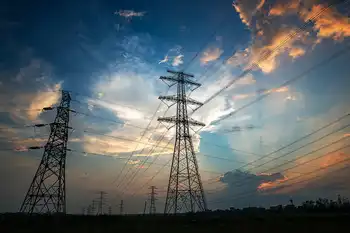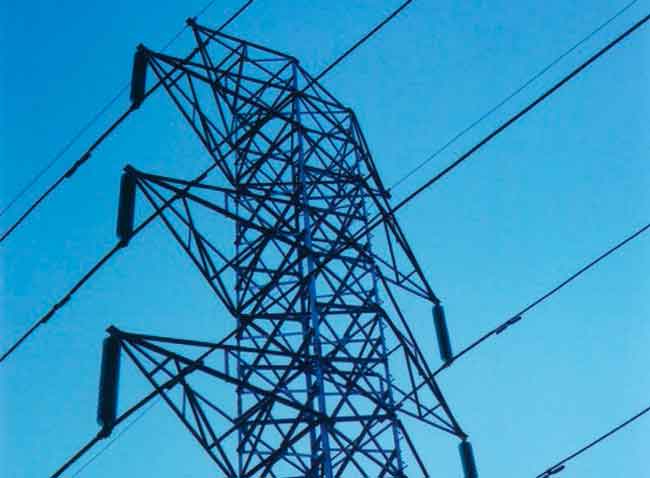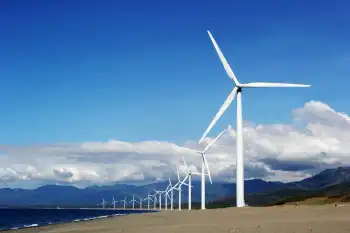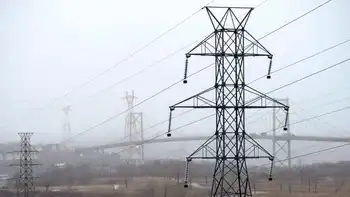Nuclear power: an inconvenient solution
By Marc Gunther, Reuters
CSA Z462 Arc Flash Training - Electrical Safety Essentials
Our customized live online or in‑person group training can be delivered to your staff at your location.

- Live Online
- 6 hours Instructor-led
- Group Training Available
"Our nation runs the risk of damaging the environment, in the name of saving the environment.
"There are negative consequences from producing energy from the sun, the wind and the earth."
So, at least, said Lamar Alexander, the Republican senator from Tennessee and a long-time conservationist, during a speech at Resources for the Future.
What’s he worried about? The danger that developing thousands of wind turbines, building solar-thermal power plants which spread across the desert and cultivating acres upon acres of land for biofuels will create “energy sprawl,” consuming too much territory and threatening wildlife.
Citing a study by the Nature Conservancy, Alexander warned that “during the next 20 years, new energy production, especially biofuels and wind power, will consume a land mass larger than the state of Nebraska.”
WhatÂ’s his solution? Nuclear power, which produces lots of low-carbon electricity in a way thatÂ’s least likely to harm wildlife and the landscape.
Speaking to an audience of environmentalists at RFF, a respected, nonpartisan think tank, Alexander said, “I want to ask you to do something that gives many conservationists a stomach ache whenever it is mentioned — and that is to rethink nuclear power.”
Even though the U.S. hasn’t built a nuclear power plant since 1990 (and 12 states have laws banning them), nukes produce “70 percent of our carbon-free electricity,” far more than wind or solar power, he noted. Of the world’s major emitters of greenhouse gases, only the U.S. has no nuclear plants under construction. If China and India build lots of nuclear plants, at a reasonable cost — admittedly a big if — they will not only be able to compete against the U.S. with cheap labor, but with cheap low-carbon power, too.
Interesting, no? As I listened to Alexander, he struck me as a Republican who might be willing to work with Democrats to deal with the climate crisis. After all, as he told the crowd at RFF, he grew up hiking and camping in the Great Smoky Mountains, supported strict emission standards for pollutants from coal plants and believes man-made burning of fossil fuels contributes to global warming. He opposes the mountaintop-removal method of coal mining and drives a plug-in hybrid.
Waxing lyrical, he said: “Italy may have its art, India its Taj Mahal, but we have the Great American Outdoors.”
But his love for the outdoors takes him only so far, it turns out.
When it comes to climate change politics, Alexander sticks closely to the Republican message that a cap-and-trade system to regulate carbon pollution is a tax that will raise energy prices. Even if Democrats were to endorse to embrace the nuclear option — Alexander wants to see 100 new nuclear plants built in the next 20 years, backed by as much as $100 billion in federal loan guarantees — he won’t support carbon regulation that would raise fuel costs, he told me after his speech.
“I’m all for climate legislation,” Alexander said, “but an economy-wide cap-and-trade program is a big mistake.”
So much for bipartisanship.
Even so, Alexander has called attention to a real problem — the pressures on land use created by unwise development of wind, solar and biofuels. The Nature Conservancy report, called Energy Sprawl or Energy Efficiency: Climate Policy Impacts on Natural Habitat for the United States of America, is a scientific, peer-reviewed study that compares the land-use impact of energy options.
It says, among other things, that:
“The land-use intensity of different energy production techniques varies over three orders of magnitude, from 1.9–2.8 km2/TW hr/yr for nuclear power to 788–1000 km2/TW hr/yr for biodiesel from soy. In all scenarios, temperate deciduous forests and temperate grasslands will be most impacted by future energy development, although the magnitude of impact by wind, biomass, and coal to different habitat types is policy-specific.”
Translating the findings, Alexander said:
“The gold standard for land usage is nuclear power. You can get a million megawatt hours of electricity a year — that’s the standard unit the authors chose — per square mile, using nuclear power. The second most compact form of renewable energy is geothermal energy. To generate the same amount of power, coal requires four square miles, taking into account all the land required for mining and extraction. Solar thermal takes six square miles. Natural gas takes seven square miles and petroleum 17. Photovoltaic cells that turn sunlight directly into electricity require 14 square miles and wind is even more dilute, requiring 28 square miles.
You get the feeling Alexander really doesn’t like wind power. He says that turbines are “the length of a football field, they are noisy and their flashing lights can be seen for up to 20 miles” and that if we build enough wind turbines to generate 20 percent of the nation’s electricity (186,000) they will kill an estimated 1.4 million birds. (Maybe, but I’ve been told that cats kill more birds than wind turbines.)
By contrast, heÂ’s confident that the nuclear waste problem is solvable and that nuclear plants are safe, citing, among others, Energy Secretary Steven Chu, a lonely pro-nuclear voice on the Obama team. Chu favors expanding federal loan guarantees for nukes.
What to make of all this? First, it’s worth noting (and Alexander did) that The Nature Conservancy did not endorse nukes in its report. In this blogpost, Rob McDonald, one of the authors, writes that his work has been “put to rhetorical use” by many, including Alexander, who assailed renewable energy “as an unprecedented assault on the American landscape” in The Wall Street Journal. That seems a little extreme no? They may not like wind turbines on Cape Cod but in much of the Midwest farmers embrace them as a new cash crop.
Second, as McDonald writes:
“…climate change is the big threat to America’s wildlife (and to our communities). Severe climate change has the potential to imperil many more species than energy sprawl.”
So before we fret too much about energy sprawl — which can be managed by wisely siting renewable power facilities — we ought to have a strong climate regulation program in place. Alexander’s plan for a combination of nukes, electric cars and solar power on rooftops but no economy-wide carbon rules fails to meet that test.
Third, environmentalists should seriously rethink nuclear power. As Alexander put it:
My fellow Tennessean Al Gore won a Nobel Prices for arguing that global warming is the inconvenient problem. If you believe he is right, and if you are also concerned about energy sprawl, then I would suggest that nuclear power is the inconvenient solution.











